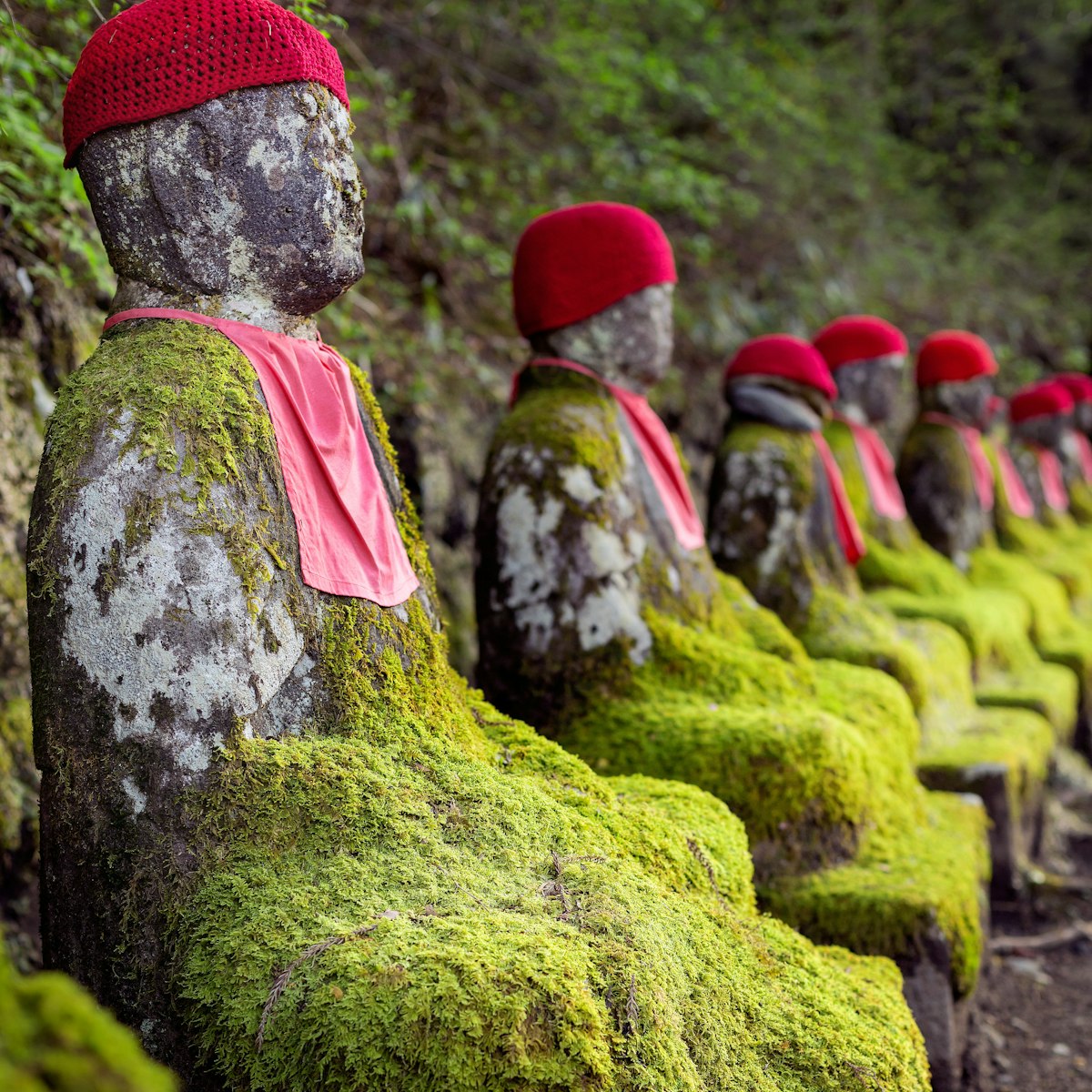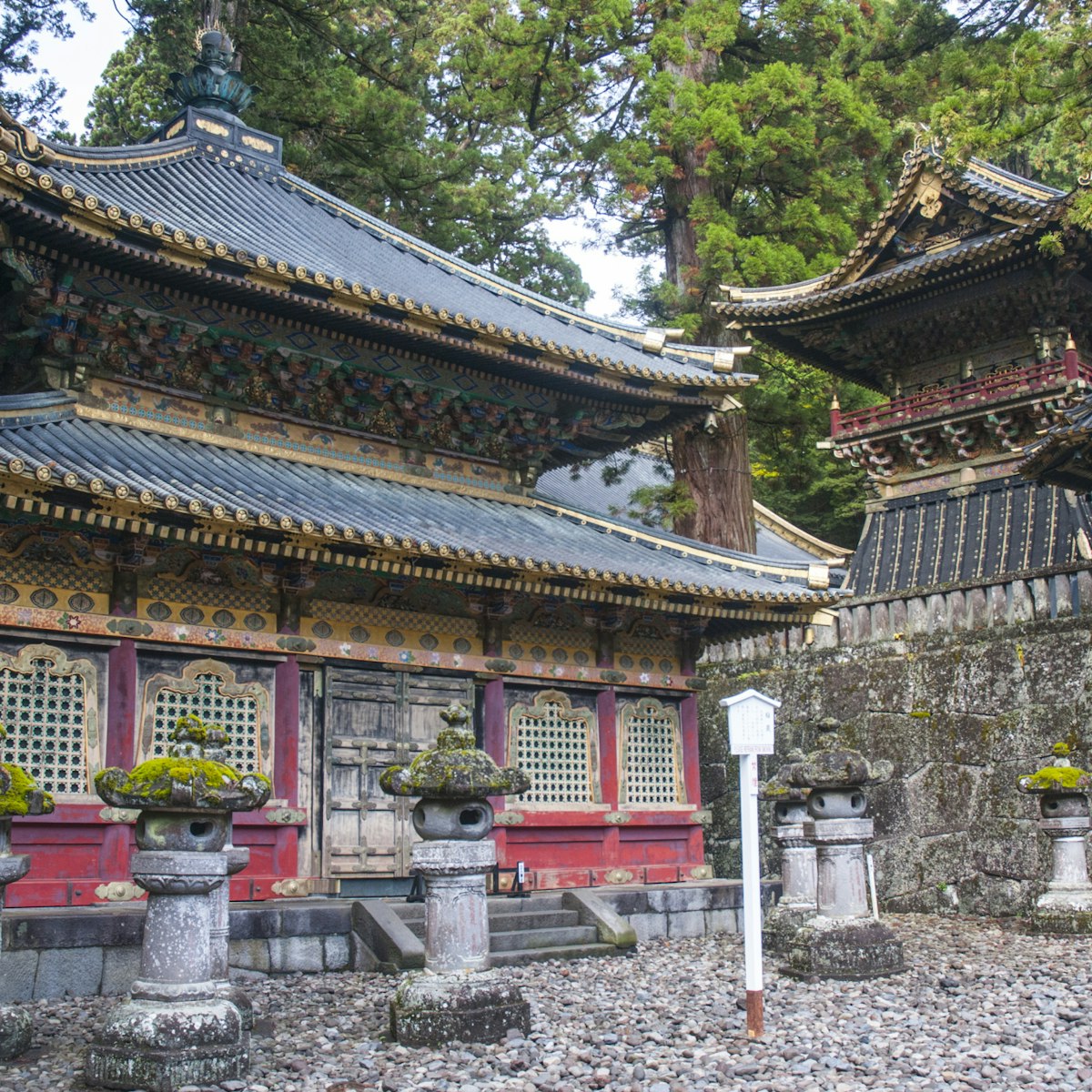
Taiyū-in, completed in 1653, is the mausoleum of Tokugawa Iemitsu (1604–51), the third Tokugawa shogun and grandson of Ieyasu. (Ieyasu was deified, which earned him a shrine; Iemitsu was given an 'ordinary' temple burial). It has many of the same features as Tōshō-gū: monumental gates, elaborate woodcarvings, lacquer and gold leaf, but is less grand (so as not to appear impudent). Many visitors find they prefer Taiyū-in for its comparatively restrained (though indeed still ornate) elegance, and also its fewer crowds.
Particularly impressive is its series of gates, Niō-mon (仁王門; 'Gate of the Virtuous Kings'), Niten-mon (二天門; 'Gate of the Heavenly Kings') and Yasha-mon (夜叉門; yasha are supernatural beings of Hindu origin), all guarded by fearsome deities. As part of Nikkō extensive restoration work, the statues have been returned to their polychrome glory, and look straight from the pages of a comic book. The final gate, Kara-mon (唐門; 'Chinese-style gate'), is decorated with more demure carvings of dragons and cranes.
Taiyū-in's Honden (本殿; Main Hall) and Haiden (拝殿; Hall of Worship) are almost entirely encased in gold leaf (with a slightly red sheen) and glossy black lacquer. Inside the main hall, 140 dragons painted on the ceiling are said to carry prayers to the heavens; those holding pearls are on their way up, and those without are returning to gather more prayers.
 Publish for free
Publish for free

 zzdtravel
zzdtravel


















